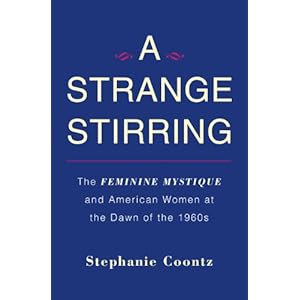Earlier this month, I went with my Framingham State University colleagues Bridgette Sheridan and Lisa Eck to the International Association for the Study of Sexuality, Society, and Culture (IASSCS) conference in Madrid. We each gave papers related to “Raising Awareness about Heteronormativity.” We applied research and theory to teaching and campus activities that challenge essentialism and de-center gender and sexuality. It was cool. I’d love to tell you all about it.
Thing is, if you aren’t at an international conference on sexuality, you might say, “what is heteronormativity?”
Well, here’s a big hint from a text I encountered yesterday (via Tyler Cowen):
The existence of a nuclear family is to a large extent dictated by nature. According to Aristotle (Politics, Book1 part 2) “there must be a union of those who cannot exist without each other; namely, of male and female, that the race may continue (and this is a union which is formed, not of deliberate purpose, but because, in common with other animals and with plants, mankind have a natural desire to leave behind them an image of themselves)”. However, families are also economic units that share consumption, coordinate work activities, accumulate wealth and invest in children. Indeed, Aristotle adds that “The family is the association established by nature for the supply of men’s everyday wants”.
Heteronormativity refers to the norms that underpin the notion that men and women are complementary and “cannot exist without each other”; that their union is natural—“not of deliberate purpose”–and, by inflection, ideal. It involves the claim that men’s and women’s “natural desire” towards one another is about leaving “behind them an image of themselves.” Think of a wedding ceremony of fifty-year-olds that incants that the function of marriage is to procreate. That is heteronormative.
The problem isn’t with hetero, hetero is grand; the problem is with naturalizing and idealizing hetero above any other. You have the elision of a social and political form, like marriage, with a natural form, like male and female, vagina and penis, and an ideal form, like a sacrament of marriage, that empowers those who believe biology is destiny.
There are consequences. When a perspective naturalizes social relations–like marriage–it renders power relations invisible by using phrases like “it’s natural” or “obviously.” In this quotation about family economics, the authors evoke a natural order of things between men and women that establishes de facto wiggle room for accounting for inequalities that persist within (and beyond) families. The authors aren’t ruling out same-sex marriage, they are just working from a model of heterosexual marriage that sets the “norm.”
You might have speculated that the passage above came from a 1950s essay by sociologist Talcott Parsons… or a 1970s discussion from Gary Becker… but it is the opening passage of a book, set to be published by Cambridge University Press, titled Family Economics. The elite scholars who wrote it open with a reference to the natural (male and female seek each other) before they propose to examine the economics of their natural arrangements.
The title of the IASSCS conference was Naming and Framing: The Making of Sexual (In)Equality. Concern with framing and theory sometimes seems removed from battles for social and sexual justice. But labeling heteronormativity helps us to name and re-frame paradigms of the powerful. It means we can call out “high theory”—like that from these economists–when it uses poetical rhetorical flourishes to engage and endorse essentialism. That’s why we’re raising awareness about heteronormativity.

 Guest poster and
Guest poster and 


